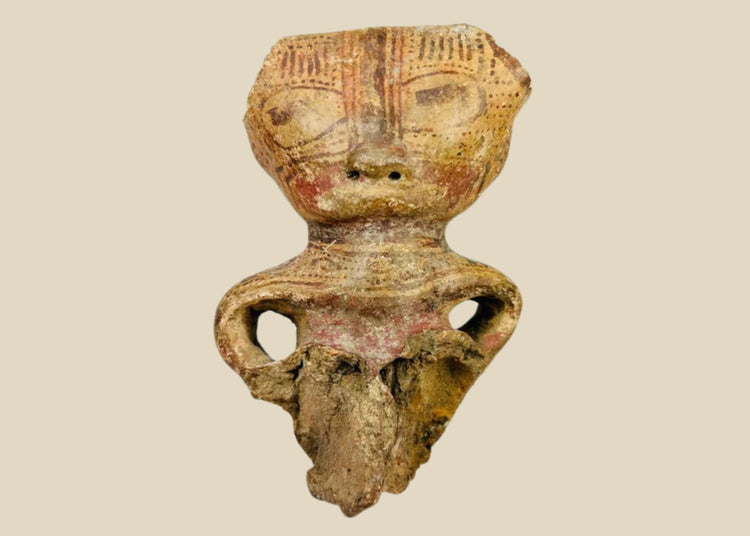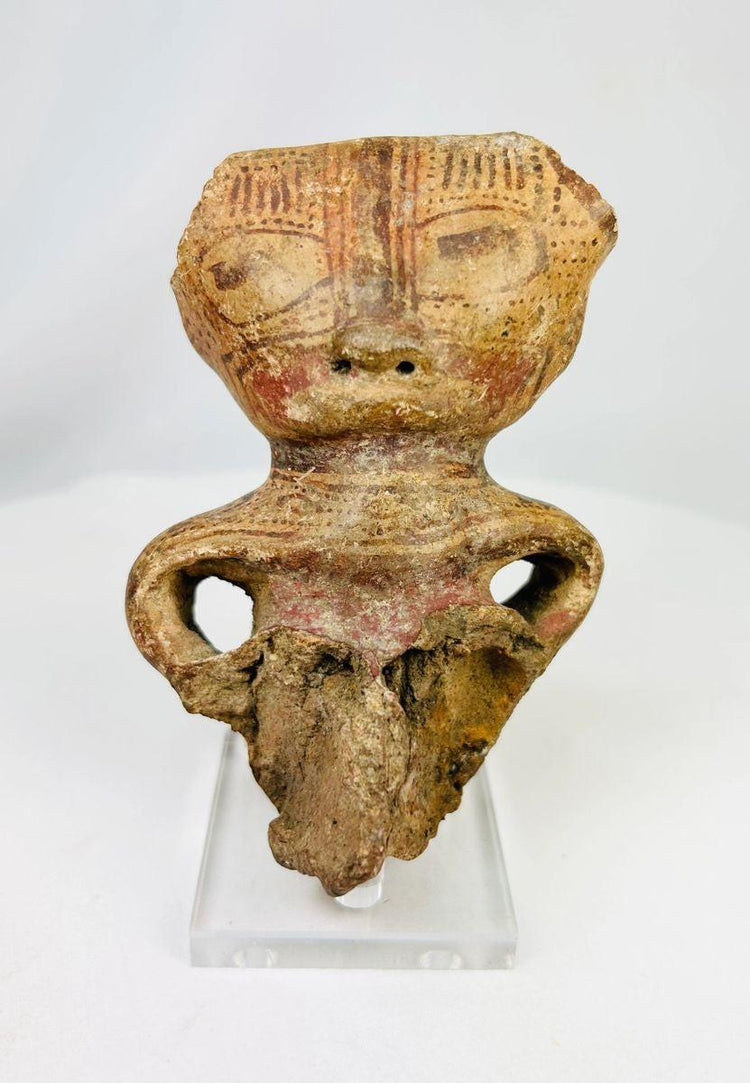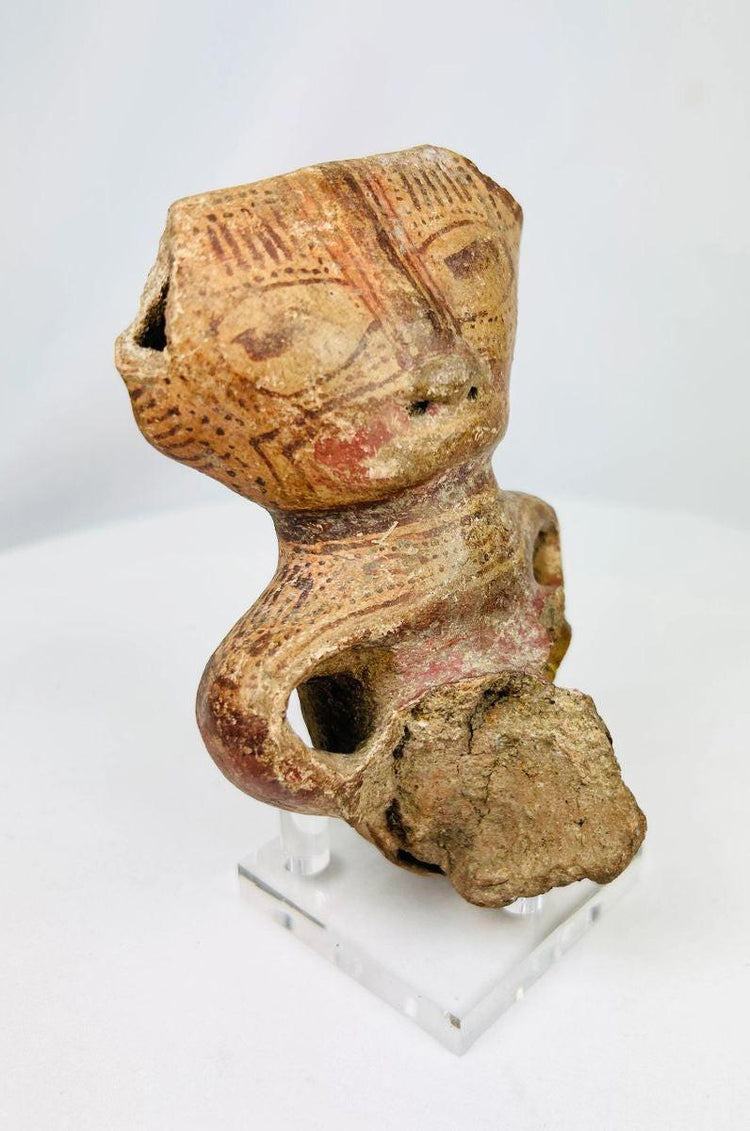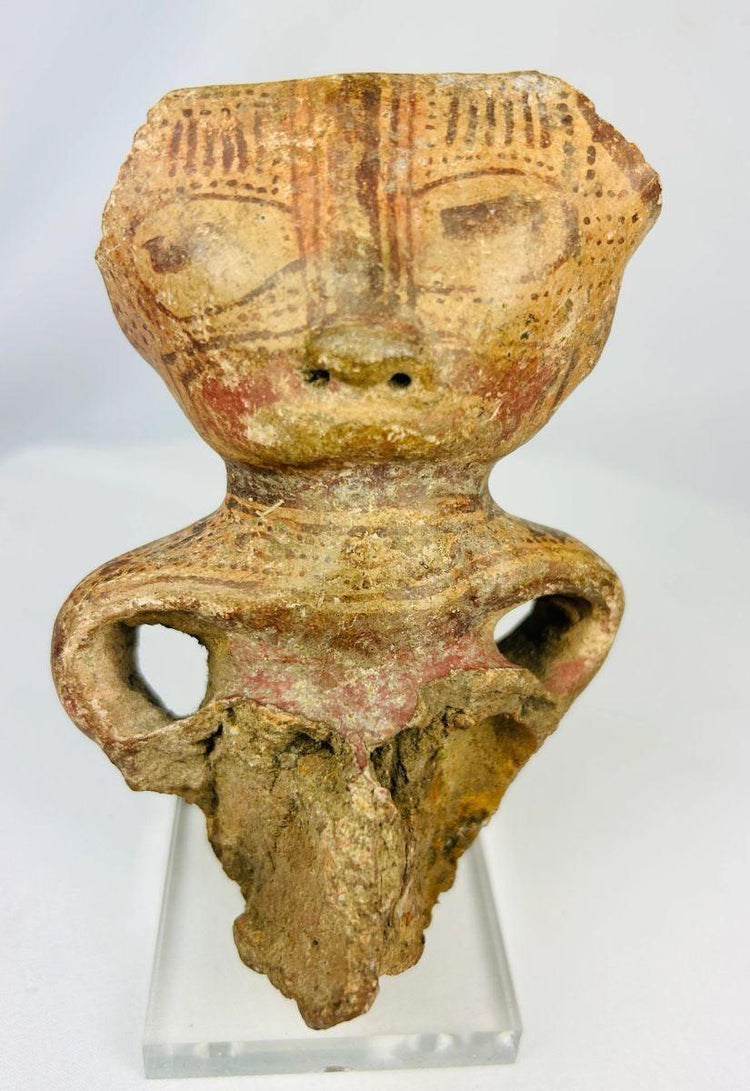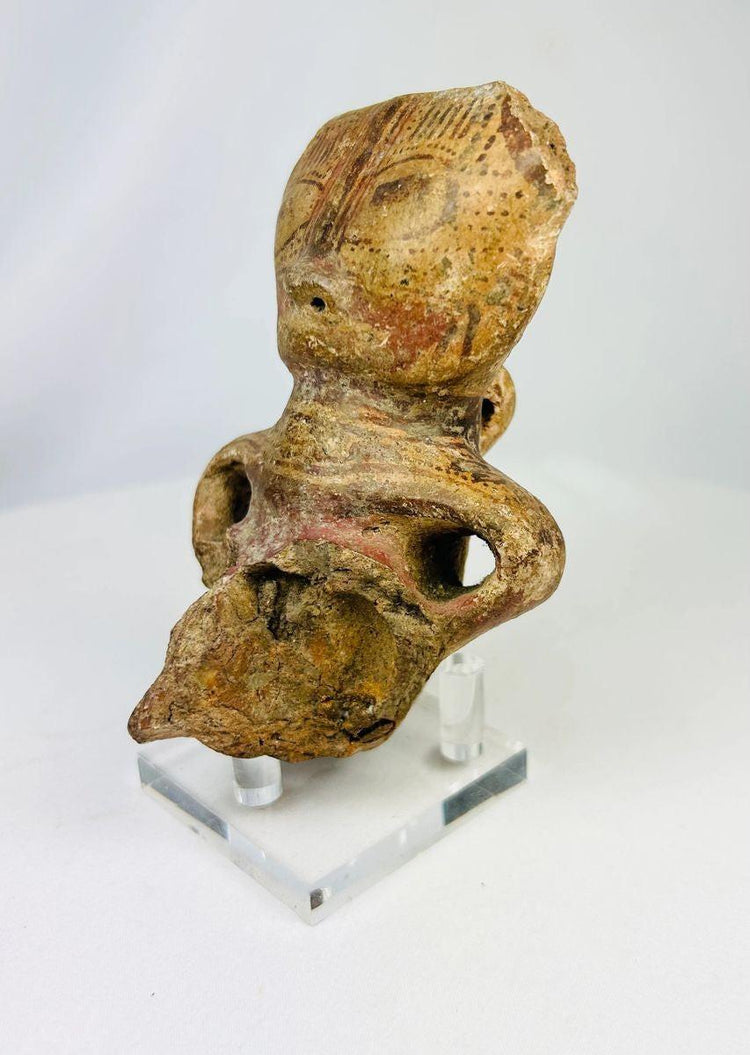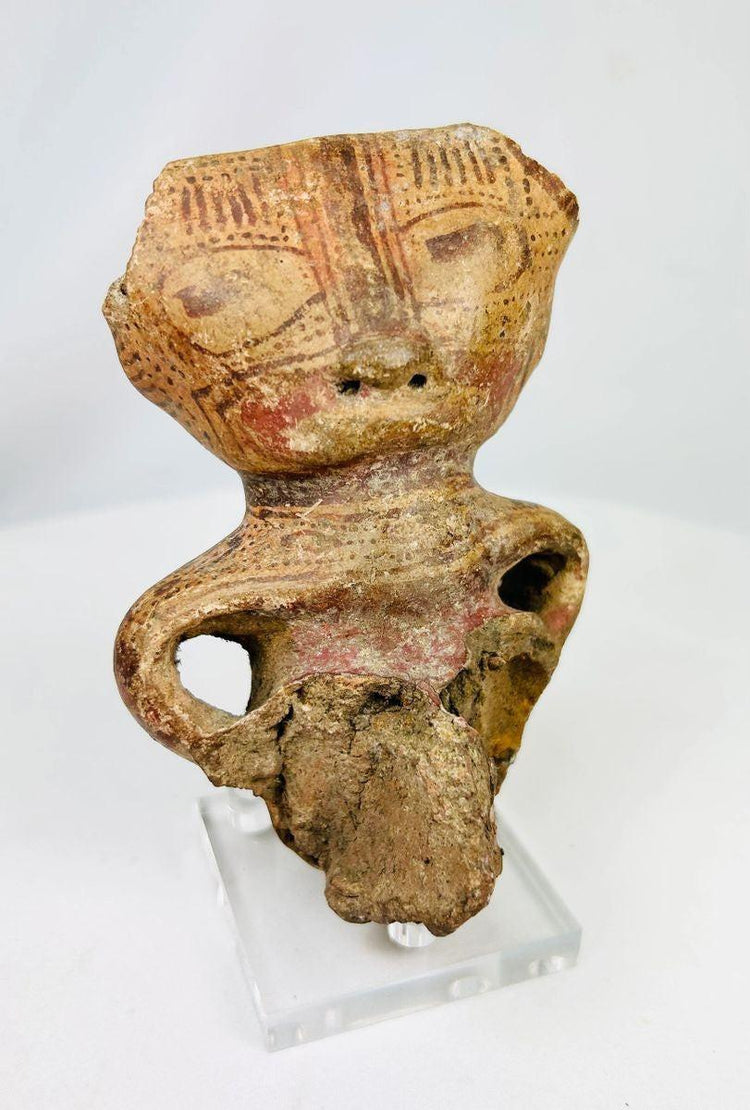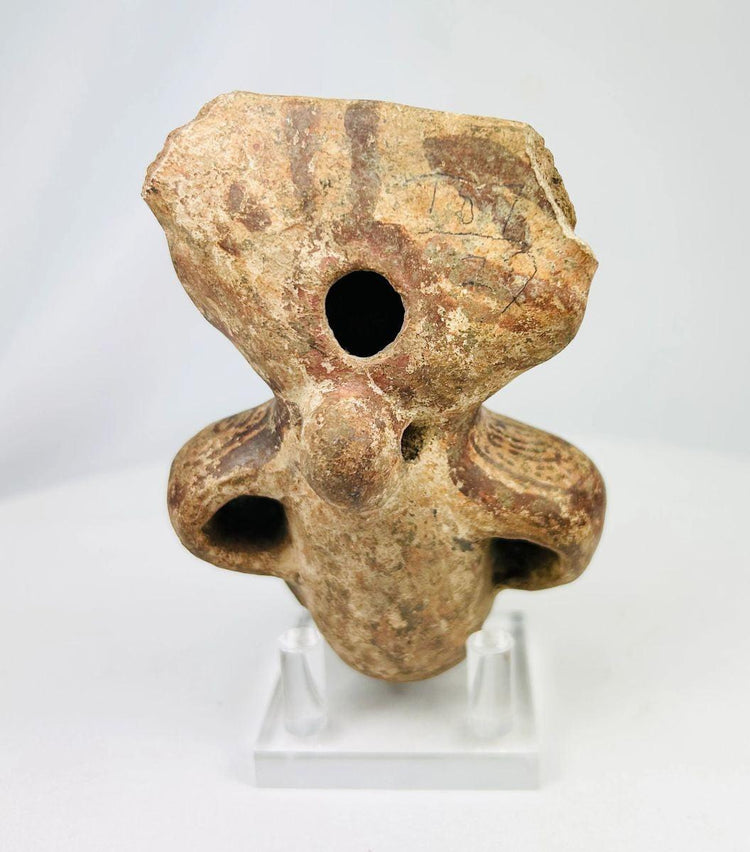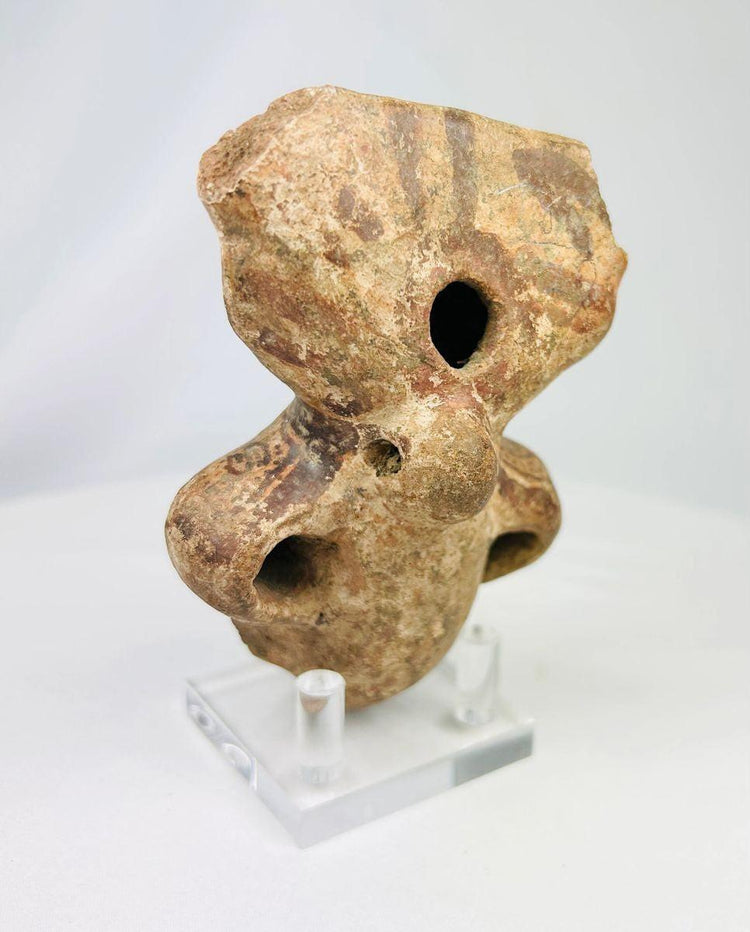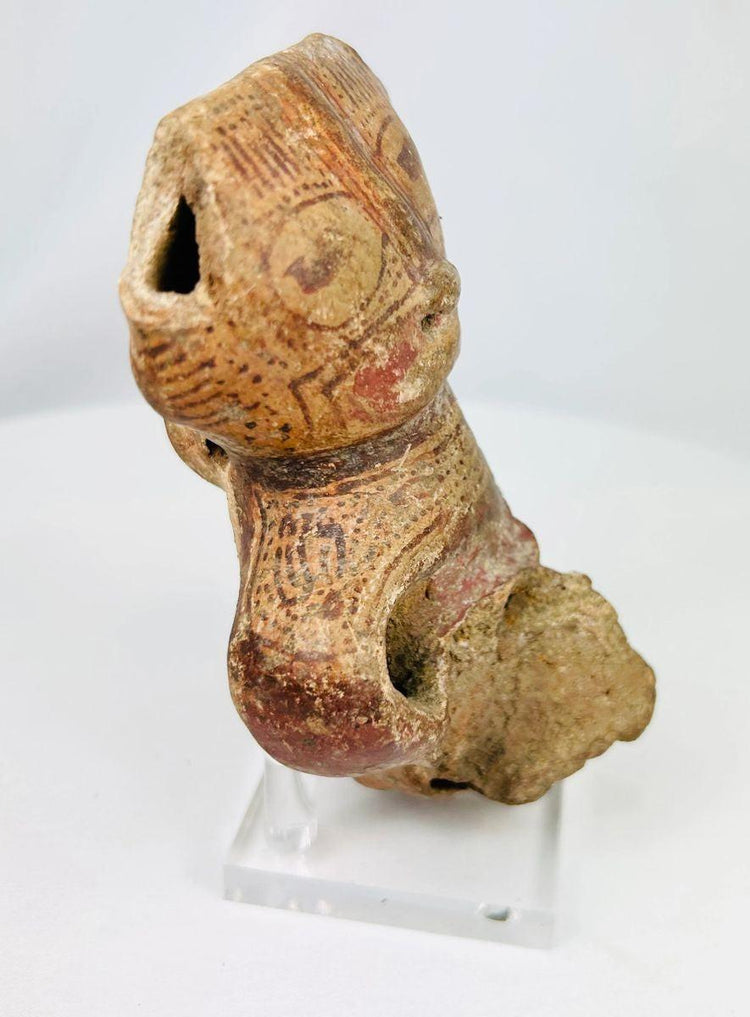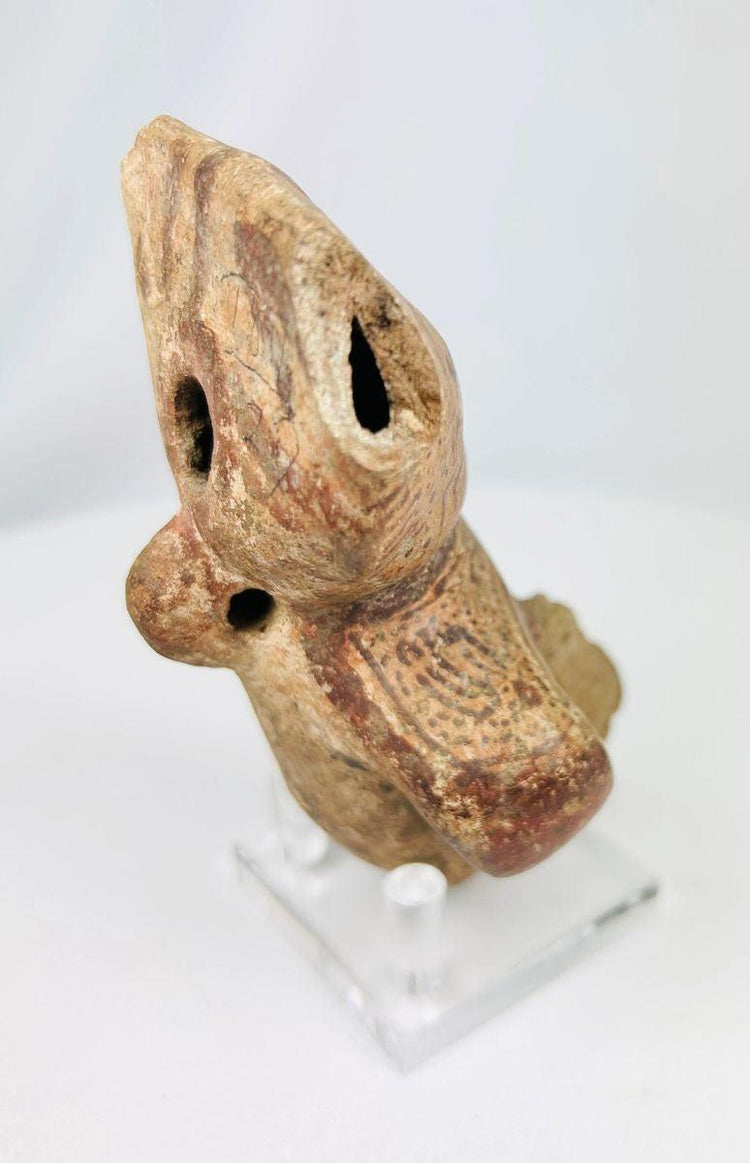Fragment de figurine en terre cuite précolombienne du Mexique occidental | Vers 300 av. J.-C. - 300 apr. J.-C.
Description
Plus
Moins
Contexte historique et origine
Région : Ouest du Mexique (Nayarit ou Jalisco)
Matériau : Terre cuite brunie avec pigments à base minérale
Période : Formatif tardif au Classique ancien, vers 300 av. J.-C. – 300 apr. J.-C.
Description
Cette rare figurine fragmentaire en terre cuite, composée d'une tête et d'un torse, illustre l'expression artistique des cultures des tombes à puits de l'ouest du Mexique. La figure est ornée de motifs linéaires complexes peints en rouge et noir sur une surface d'argile chamois, représentant vraisemblablement des tatouages ou des marques cérémonielles. Ses larges yeux en amande, ses narines percées et son ornement facial géométrique reflètent l'esthétique stylisée des anciennes traditions Nayarit et Jalisco. Bien qu'incomplète, la figure conserve une présence puissante et une intégrité archéologique remarquable, avec des ajouts funéraires visibles et une patine qui renforcent son authenticité.
Caractéristiques
- Yeux stylisés en amande et narines percées
- Motifs linéaires peints en rouge et noir ressemblant à des tatouages ou à des marques cérémonielles
- Corps creux avec section de torse survivante
- Forte patine funéraire avec incrustations minérales
- Caractère archéologique cohérent avec les fouilles de tombes à puits
Importance culturelle
Les figurines de ce type étaient traditionnellement enterrées dans des tombes à puits profonds, accompagnant le défunt, symbolisant des ancêtres, des divinités ou des participants aux cérémonies. Leurs motifs peints mettaient souvent l'accent sur la transformation spirituelle, la lignée ou l'identité communautaire, offrant un aperçu des pratiques funéraires et des systèmes de croyances du Mexique occidental précolombien.
Condition
État fragmentaire, avec des pertes à la tête et au bas du corps. La surface peinte d'origine reste partiellement visible, avec des traces d'usure, des accumulations minérales et des incrustations dues à l'âge. Stable et parfaitement adapté à l'exposition.
Dimensions (approximatives)
Hauteur : 4,5 pouces
Âge
Estimé entre 1 700 et 2 300 ans
Description
Contexte historique et origine
Région : Ouest du Mexique (Nayarit ou Jalisco)
Matériau : Terre cuite brunie avec pigments à base minérale
Période : Formatif tardif au Classique ancien, vers 300 av. J.-C. – 300 apr. J.-C.
Description
Cette rare figurine fragmentaire en terre cuite, composée d'une tête et d'un torse, illustre l'expression artistique des cultures des tombes à puits de l'ouest du Mexique. La figure est ornée de motifs linéaires complexes peints en rouge et noir sur une surface d'argile chamois, représentant vraisemblablement des tatouages ou des marques cérémonielles. Ses larges yeux en amande, ses narines percées et son ornement facial géométrique reflètent l'esthétique stylisée des anciennes traditions Nayarit et Jalisco. Bien qu'incomplète, la figure conserve une présence puissante et une intégrité archéologique remarquable, avec des ajouts funéraires visibles et une patine qui renforcent son authenticité.
Caractéristiques
- Yeux stylisés en amande et narines percées
- Motifs linéaires peints en rouge et noir ressemblant à des tatouages ou à des marques cérémonielles
- Corps creux avec section de torse survivante
- Forte patine funéraire avec incrustations minérales
- Caractère archéologique cohérent avec les fouilles de tombes à puits
Importance culturelle
Les figurines de ce type étaient traditionnellement enterrées dans des tombes à puits profonds, accompagnant le défunt, symbolisant des ancêtres, des divinités ou des participants aux cérémonies. Leurs motifs peints mettaient souvent l'accent sur la transformation spirituelle, la lignée ou l'identité communautaire, offrant un aperçu des pratiques funéraires et des systèmes de croyances du Mexique occidental précolombien.
Condition
État fragmentaire, avec des pertes à la tête et au bas du corps. La surface peinte d'origine reste partiellement visible, avec des traces d'usure, des accumulations minérales et des incrustations dues à l'âge. Stable et parfaitement adapté à l'exposition.
Dimensions (approximatives)
Hauteur : 4,5 pouces
Âge
Estimé entre 1 700 et 2 300 ans
Vous aimerez peut-être aussi


























